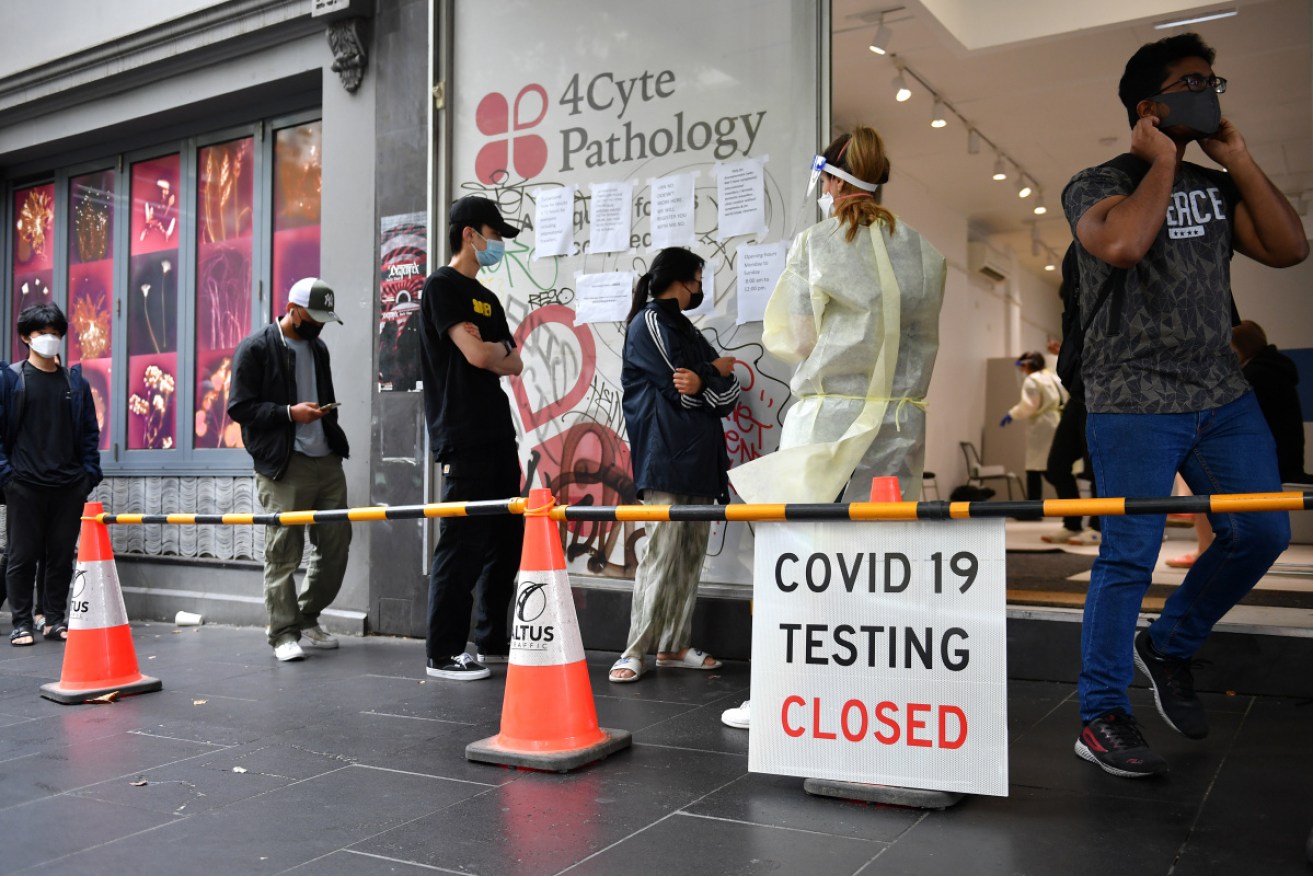Even as deaths break records, Victoria is winding down its COVID taskforce

COVID-19 emergency sites are giving way to at-home RAT testing and jabs administered by GPs. Photo: AAP Photo: AAP
As COVID-19 hospitalisations and deaths remain high across Australia, Victoria is scaling back its dedicated pandemic response workforce.
The COVID-19 Response unit will officially transfer pandemic management to Victoria’s health department from July 1, after gradually shifting responsibilities over the past few months.
Led by Jeroen Weimar until he stepped down at the end of April, the central bureaucracy has overseen the state’s test, trace and isolation system since it was set up in 2020.
The state government believes the time is right for the shake-up, with 70 per cent of all COVID-19 vaccinations currently delivered by local GPs and pharmacists and more people opting to use rapid antigen tests.
Switch to local
Under the changes, local public health units will lead the delivery of COVID-19 services under the health department’s stewardship.
“The COVID-19 Response was always a time-limited operation,” a Victorian government spokesman said on Saturday.
“While the pandemic was incredibly challenging there were some valuable lessons learned and a lot of trust established through LPHUs.”
Victorian Health Minister Martin Foley has acknowledged the state is facing a “challenging winter” as bubbling COVID-19 cases and the return of flu place further pressure on the system.
While Australia’s COVID-19 intensive care figures have fallen in the past fortnight, about 2700 patients remain in hospitals across the country.
28,000 new cases
More than 28,000 new COVID-19 cases were reported in Australia on Saturday, along with a further 60 deaths to take the weekly toll to 292.
It came as new modelling showing Western Australia’s Pilbara region is the most prone to a COVID-19 outbreak from Perth, with fly-in fly-out workers likely to blame.
The research, by University of Western Australia student Yuval Berman, used location data from mobile phones from the past two years to model regional transmission of the virus across the state, taking into account vaccination levels, border controls and restrictions.
“We found that towns in the Pilbara are more prone to a COVID outbreak originating in Perth than towns in most other parts of the state, including the busy southwest,” Mr Berman said.
“We believe this is most likely driven by FIFO activity, with the results suggesting the need for prudent health monitoring of fly-in and fly-out workers.”
WA eased COVID-19 isolation rules on Wednesday and announced its mandatory three-dose vaccination policy would end for most workers on June 10.
LATEST 24-HOUR COVID-19 DATA:
- Victoria: 8445 cases, 16 deaths, 509 in hospital with 29 in ICU
- NSW: 6594 cases, 18 deaths, 1227 in hospital with 28 in ICU
- WA: 6242 cases, 10 deaths, 278 in hospital with 11 in ICU
- Queensland: 3423 cases, 11 deaths, 286 in hospital with six in ICU
- SA: 2789 cases, four deaths, 230 in hospital with nine in ICU
- Tasmania: 575 cases, one death, 39 in hospital with none in ICU
- NT: 192 cases, no deaths, 19 in hospital with none in ICU.








